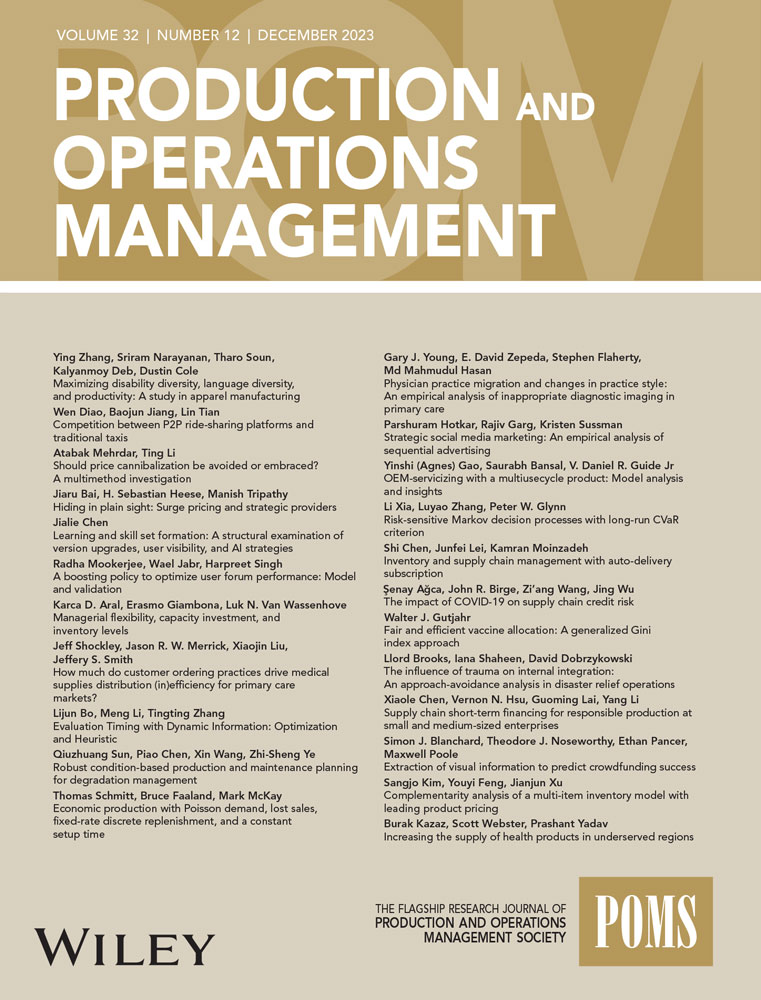医师执业迁移和执业风格的变化:初级保健中不适当诊断影像的实证分析
IF 5.1
3区 管理学
Q1 ENGINEERING, MANUFACTURING
引用次数: 0
摘要
人们对医生适应其执业风格的能力和意愿非常感兴趣,因为研究表明,许多医生的执业方式与现有的最佳科学证据不一致。我们利用迁移模式的初级保健医生在马萨诸塞州超过8年的时间,通过跟踪医生迁移到实践站点组成的新同行共享实际的物理工作空间。我们调查了患者接受不适当的诊断成像,特别是磁共振成像(MRI)转诊的可能性是否与转诊医生工作环境的变化有关。研究结果表明,迁移医生在迁移后不久就改变了他们的成像实践风格,与新同行群体的平均实践风格保持一致,而不管这种实践风格是否与基于证据的诊断成像标准相一致。为了将我们的结果置于背景中,在迁移医生的新工作环境和以前的工作环境之间,平均不适当的MRI转诊率相差1个百分点,患者接受不适当的MRI转诊的概率变化约为14%。在新的同侪组中,不适当的MRI转诊率变化较大,影响减弱。结果表明,医生的实践风格可能偏离基于证据的标准,并且在工作环境中医生之间差异显著。与此同时,医生的执业风格在任何一个方向上都是可塑的——或多或少地偏离基于证据的标准,以符合他们的新同行群体的平均执业风格。这些结果表明,医疗保健管理者可以采用各种机构层面的干预措施,通过包括在医生的工作环境中发展强大的同伴影响力的策略,来影响医生循证实践方向的行为。本文章由计算机程序翻译,如有差异,请以英文原文为准。
Physician Practice Migration and Changes in Practice Style: An Empirical Analysis of Inappropriate Diagnostic Imaging in Primary Care
Abstract Much interest exists in physicians’ ability and willingness to adapt their practice styles, as research demonstrates that many physicians practice in ways that are not aligned with the best available scientific evidence. We exploit migration patterns of primary care physicians in Massachusetts over a span of 8 years by tracking physician migrations to practice sites comprised of new peers who shared actual physical working space. We examined whether a patient's likelihood of receiving an inappropriate referral for diagnostic imaging, specifically a magnetic resonance imaging (MRI), was associated with a change in the work environment of the referring physician. Study results indicate that migrating physicians changed their practice style for imaging relatively soon after migration in conformance with the average practice style of their new peer group regardless of whether or not the practice style was aligned with evidence‐based standards for diagnostic imaging. To place our results in context, a 1 percentage point difference in average inappropriate MRI referral rates between a migrating physician's new and previous work environment was associated with approximately a 14% change in the probability that a patient received an inappropriate MRI referral. The effect diminished with greater variability in inappropriate MRI referral rates within the new peer group. The results show that physician practice style may deviate from evidence‐based standards and vary markedly among physicians within a work environment. At the same time, physician practice style is also malleable in either direction—more or less likely to deviate from evidence‐based standards in conformance with the average practice style of their new peer group. These results imply that healthcare managers can employ various institutional‐level interventions to influence physician behavior in the direction of evidence‐based practice by including strategies directed towards developing strong peer influence in physicians’ work environments.
求助全文
通过发布文献求助,成功后即可免费获取论文全文。
去求助
来源期刊

Production and Operations Management
管理科学-工程:制造
CiteScore
7.50
自引率
16.00%
发文量
278
审稿时长
24 months
期刊介绍:
The mission of Production and Operations Management is to serve as the flagship research journal in operations management in manufacturing and services. The journal publishes scientific research into the problems, interest, and concerns of managers who manage product and process design, operations, and supply chains. It covers all topics in product and process design, operations, and supply chain management and welcomes papers using any research paradigm.
 求助内容:
求助内容: 应助结果提醒方式:
应助结果提醒方式:


